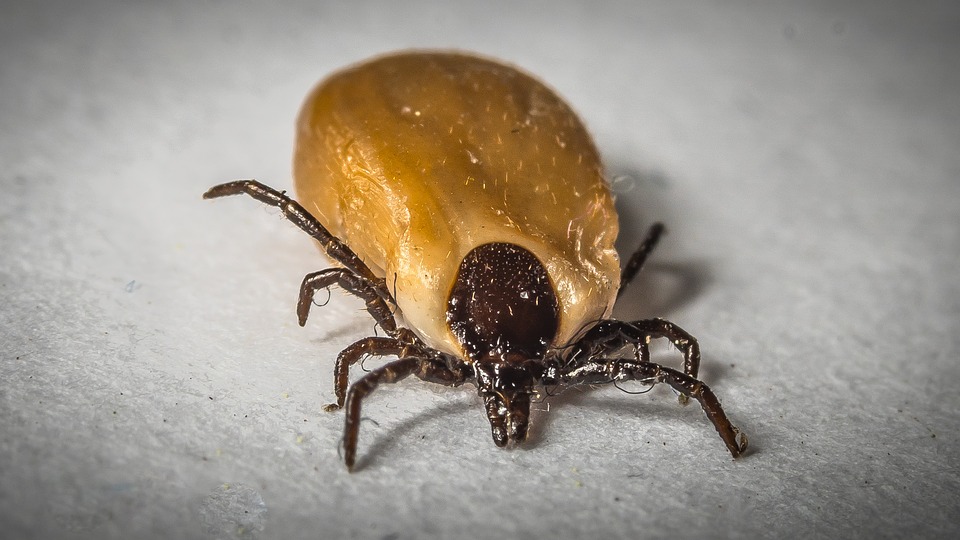“Surging numbers of people are being diagnosed with Lyme disease as cases spread from rural areas to the suburbs,” the Daily Mail reports.
The ongoing rise in Lyme disease cases in the UK – thought to be driven by climate change, leading to warmer winters – has been known by public health officials for some time. Reported cases in England and Wales rose from 268 in 2001 to 959 in 2011, but the true figure is thought be much higher. Current estimates put the actual figure at around 3,000 cases a year in England and Wales.
It may also be the case that the disease is, as the Mail puts it, “moving into the suburbs,” or least into the parks. A recent study from September 2015 found ticks that could potentially carry infection in two South London parks: Richmond Park and Bushy Park.
This latest media interest in Lyme disease is driven by the fact that a number of high-profile people on both sides of the Atlantic have reported contracting the infection, such as billionaire founder of Phones4U John Caudwell and High School Musical star Selena Gomez.
So what exactly is Lyme’s disease, what are the symptoms and treatments, and most importantly, how can you stop yourself contracting the condition? Find out below.
What is Lyme disease?
Lyme disease, or Lyme borreliosis, is a bacterial infection spread to humans by infected ticks.
Ticks are tiny spider-like creatures found in woodland and heath areas. They feed on the blood of birds and mammals, including humans. Ticks that carry the bacteria responsible for Lyme disease are found throughout the UK and in other parts of Europe and North America.
Lyme disease can often be treated effectively if it’s detected early on. But if it’s not treated or treatment is delayed, there’s a risk you could develop severe and long-lasting symptoms.
Signs and symptoms of Lyme disease
Many people with early-stage Lyme disease develop a distinctive circular rash at the site of the tick bite, usually around three to 30 days after being bitten.
The rash is often described as looking like a bull’s-eye on a dart board. The affected area of skin will be red and the edges may feel slightly raised.
The size of the rash can vary significantly and it may expand over several days or weeks. Typically, it’s around 15cm (6 inches) across, but it can be much larger or smaller than this. Some people may develop several rashes in different parts of their body.
However, around one in three people with Lyme disease won’t develop this rash.
Some people with Lyme disease also experience flu-like symptomsin the early stages, such as tiredness (fatigue), muscle pain, joint pain, headaches, a high temperature (fever), chills and neck stiffness.
More serious symptoms may develop several weeks, months or even years later, if Lyme disease is left untreated or is not treated early on. These can include:
pain and swelling in the joints (inflammatory arthritis)
problems affecting the nervous system – such as numbness and pain in your limbs, paralysis of your facial muscles, memory problems and difficulty concentrating
heart problems – such as myocarditis, pericarditis, heart block and heart failure
meningitis – which can cause a severe headache, a stiff neck and increased sensitivity to light
Some of these problems will slowly get better with treatment, although they can persist if treatment is started late.
A few people with Lyme disease go on to develop long-term symptoms similar to those of fibromyalgia or chronic fatigue syndrome.
When to see your GP
You should see your GP if you develop any of the symptoms described above after being bitten by a tick, or if you think you may have been bitten. Make sure you let your GP know if you’ve spent time in woodland or heath areas where ticks are known to live.
Treating Lyme disease
If you develop symptoms of Lyme disease, you will normally be given a course of antibiotic tablets, capsules or liquid. Most people will require a two- to four-week course, depending on the stage of the condition.
If you are prescribed antibiotics, it’s important to finish the course, even if you are feeling better, because this will help ensure that all the bacteria are killed.
Preventing Lyme disease
There is currently no vaccine available to prevent Lyme disease. The best way to prevent the condition is to be aware of the risks when you visit areas where ticks are found and to take sensible precautions.
You can reduce the risk of infection by:
keeping to footpaths and avoiding long grass when out walking
wearing appropriate clothing in tick-infested areas (a long-sleeved shirt and trousers tucked into your socks)
wearing light-coloured fabrics that may help you spot a tick on your clothes
using insect repellent on exposed skin
inspecting your skin for ticks, particularly at the end of the day, including your head, neck and skin folds (armpits, groin and waistband) – remove any ticks you find promptly
checking your children’s head and neck areas, including their scalp
making sure ticks are not brought home on your clothes
checking that pets do not bring ticks into your home in their fur
